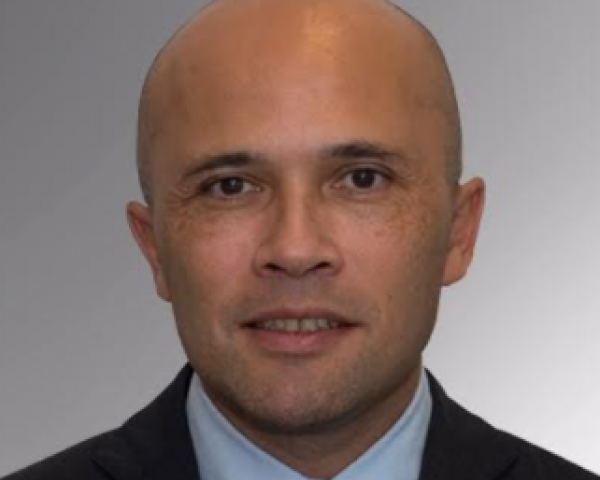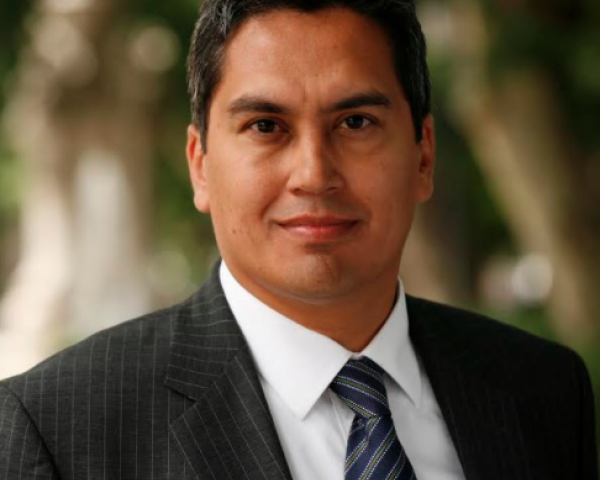In 2006, years before Lemonade started to disrupt the insurance industry and the terms "fintech" and "insurtech" became known at large, Daisuke Iwase co-founded the first digital life insurance company Lifenet in Japan. Lifenet has been disrupting the Japanese life insurance sector right from the start by providing direct distribution of life insurance products via the internet – something that many still say is impossible to do. We’re therefore excited that Daisuke Iwase, a real pioneer in digital innovation, sat down with us to share his secrets on how he uses his experience in his current role as group chief digital officer at AIA Group.
AIA Group is 100% focused on the Asia-Pacific with a presence in 18 markets, and headquarters in Hong Kong. The portfolio includes over 33 million individual policies and over 16 million group scheme members. AIA has an outstanding track record of growth. It is the largest life insurer in the world in terms of market capitalization. There is a major commitment to digital innovation, especially in transformative business models.
Summer 2006, many years before people even thought fintech and insurtech could disrupt the digital landscape and the overall industry, you decided to start a digital life insurance company. Can you share how this came about?
Daisuke: “Let me start by describing the industry landscape at that point. Many complex products, lack of transparency, mistrust, distrust in life insurers, consumers looking for more simple, transparent and convenient solutions. At the time, we had most industry colleagues telling us it was impossible; no one would buy life insurance digitally. Regulators wouldn’t give a license to two random individuals. But then, May 2008, we launched Lifenet with a capital of more than $120 million and with a license awarded to a new independent company. This was the first license awarded since 1936!”
Impressive! Basically, you were insurtech 1.0, operating in a time before unicorns or the rise of fintech and insurtech …
Daisuke: “In hindsight, we were a little bit ahead of time, yes. Fast forward three, four years to March 2012, we were still small but growing rapidly. We basically tried to build something that made total sense, but faced many challenges. We went public on the Tokyo Stock Exchange, raising additional capital. We also persuaded Swiss Re to come on board to become our lead investor. And a little later, in 2015, KDDI, Japan's second largest telco, became the largest shareholder of Lifenet. So it has been a journey, but a very interesting journey.”
See also: New Efficiencies in Life Insurance
Lifenet celebrated its 10th anniversary summer of 2018. Many say the company not only stands out because of its business model, but also because of its corporate culture. About 65% of the staff comes from other industries. Can you share a bit about this exciting period at Lifenet and being the first challenger in a huge, matured market?
Daisuke: “At that time, Japan was the second-largest life insurance market in the world with over $400 billion in premium written every year. We came with a very simple solution: term and supplemental health insurance that was sold online with transparency, empowering the consumers, saving cost and giving the cost back to the consumers. We had successes, challenges and setbacks. I must say I am really proud of what we have achieved at Lifenet. I think we inspired many other challengers that shared the belief that incumbents could change the way they engage with their customers, the way they design their products, the way they engage with the millennials. But we did not yet disrupt the market.”
Nevertheless, you had a significant impact on the Japanese life insurance industry and probably also beyond Japan. What lessons did you learn?
Daisuke: “Let me share three lessons. First, consumers do not necessarily behave in an economically rational manner. Makes sense if you think about it. When was the last time you made a purchase solely based on economics? So, there is a lot more than just delivering value to the customers. Second, having the best products does not necessarily make you the one with the largest market share. History has shown that many times the companies with the best products do not necessarily win, but companies with the strongest distribution do prevail.
Third, my humble experience reminds me of a case I read during my time at business school. It was on channel distribution strategy in marketing, and it said, ‘You can eliminate the intermediaries, but you cannot totally eliminate the functions they are serving.’ So, while we believe that by going direct to customers we can create significant value, there are many reasons that insurance agents have existed for a long, long time in history, and there are multiple functions that they serve that cannot be totally eliminated; they have to be replicated in different forms. That’s why technology is a tool to either help you sell life insurance in a more productive manner or help consumers buy life insurance more efficiently. But, during this time, from 2008 to 2018, most consumers did not wake up in the morning yearning to buy life insurance more efficiently.”
Technology, at the end of the day, is a means to an end. So, then in late 2017, Keng Hooi, CEO of AIA Group, approached you and offered you another challenge.
Daisuke: “Yes, and I shared these views with my current CEO now at AIA. AIA, given its strong distribution presence, should focus on enabling and empowering the distribution force through the power of technology. Not much later, as Lifenet celebrated its 10th anniversary in the summer of 2018, I made my transition from an entrepreneur to lead the digital and innovation initiative for the largest Pan Asian life insurer.”
In Europe, most people know AIA through the Tottenham Hotspur sponsorship. Can you tell a bit more about the company?
Daisuke: “AIA is the largest independent publicly listed pan-Asian life insurance group – with a presence in 18 markets around the Asia-Pacific region. We were rooted in Shanghai a century ago in 1919. We completed the reorganization driven by AIG’s liquidity crisis in 2008, leading to the positioning of the company for a public listing. As of June 2019, AIA was valued at $120 billion, becoming the largest life insurer in terms of market capitalization.”
So, here you are, making the transition from a start-up to this huge company. What drove you to make this transition?
Daisuke: “The reason is exactly the size and the potential impact that I can have through the AIA platform. Through AIA, I can touch the lives of our 30 million customers across 18 markets. Needless to say, I am very excited about the opportunity. I truly believe that we are at a very interesting time, when the fundamental nature of a life insurer is significantly changing from a payer to a lifetime partner, supporting the health and the life of our policyholders. But I also believe that the life insurance industry will not be disrupted in the foreseeable future because of one reason; it is the low purchase frequency of the product. The power of digital is at its best when it involves something that is of very frequent purchase like an Amazon product or travel, etc. With the way life products are designed to date, this is not the case.”
What should be the way forward then, in your view?
Daisuke: “We can add much value by going digitally but with somehow limited impact. What we can do is change the nature of the engagement. The engagement takes place when we pay you when you're sick or you are diseased and thus becoming a more engaging partner of your healthy life. The opportunity for digital to have more impact will be larger. Just looking at the fundamentals, Asia's middle class will continue to grow. This middle class will make up the majority of the new rising middle class who, as they increase their fluency, would seek protection coverage for their loved ones. AIA’s competitive advantage lies in our extremely robust and competitive distribution force through highly disciplined management of agency and through the new partnerships that we are pursuing with our bank or telco partners and other non-traditional partners as well as our focus on health and wellness.”
Can you share a bit about the strategy to make this happen?
Daisuke: We've identified four strategic areas that we would like to focus on as part of this innovation initiative. First is
distribution digitalization. Second is
customer engagement and ecosystem. Third is
proposition enhancement, primarily around health tech. And fourth is
artificial intelligence and data analytics. We're looking for companies that are willing to build a base in Asia to properly support us, offer robust technology and solutions and partner with other countries in our 18 markets to realize the vision that I've shared with you right now.”
Scaling insurtech innovations with the incumbentsorganization seems difficult. Having been at the other side of the table, I'd say your experience as an entrepreneur means that you probably approach things differently compared with a traditional large insurance company …
Daisuke: “I'm not interested in doing innovation for the sake of innovation. I only want to focus on things that have real impact, and by impact we mean something that moves the needle for our $120 billion market capitalization. I've noticed that innovation cannot happen in an isolated lab or isolated group office. It has to be embedded into the strategic priorities, it has to be driven by the markets, the countries that are running their businesses day to day. We need to have a clear budget to support that. We need to have close alignment with our internal technology team to assess and build real businesses, and of course there needs to be a change in the culture and the mindset, which so often hinders innovation and challenging new initiatives.”
See also: What Is Really Disrupting Insurance?
How do you tackle this from your current role as the executive who is responsible for digital, data and innovation?
Daisuke: “As I mentioned earlier, I think there's a lot that we can do to make our distribution partners, our agents, our banks, our telco partners sell life insurance more productively to enrich our customer experience and to enable our employees, our colleagues to operate much more efficiently. Previous to my arrival, AIA had already embarked on many digital initiatives. For instance, last year we led a strategic investment of $500 million, as an investor group collectively, in WeDoctor, an online healthcare solutions platform, providing seamless online and offline healthcare services as well as integration of general practitioner and specialist doctors in China. WeDoctor has 27 million monthly active users on its platform, and through this strategic alliance we believe that we can deliver a new value proposition for our customers and access the broad customer base that WeDoctor has and many more digital initiatives we have pursued.”
How do you think the future of life insurance will look?
Daisuke: “I think of many things that may change in the future, but then my 10 of years experience running Lifenet made me humble about how slow or how little consumer behavior actually changes. What will
not change is the fundamental nature of the life insurance product, a financial solution to offer protection for families in the future. But we are listening to many changes that are happening around us, that affect the way consumers behave, the expectations consumer have, and the role that life and non-life insurers may play. I hope that you can feel the energy from Asia. The opportunities ahead are serious commitments to driving our growth further through technology and innovation.”



